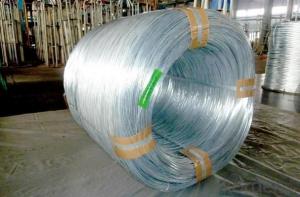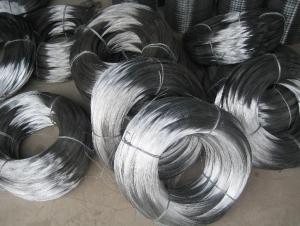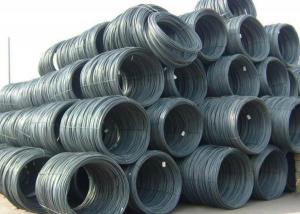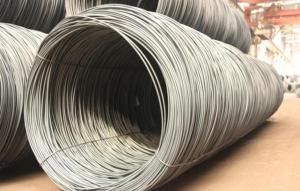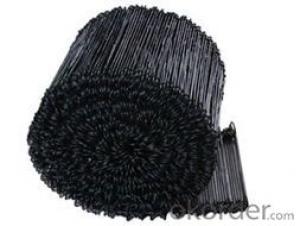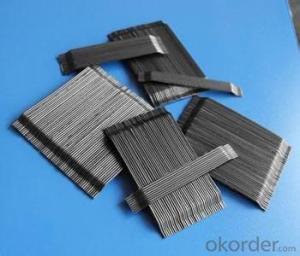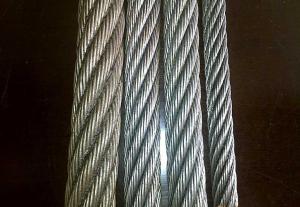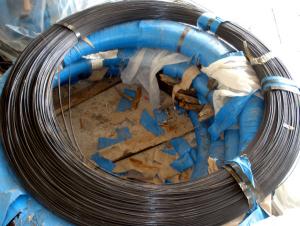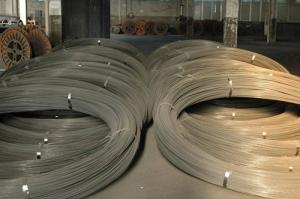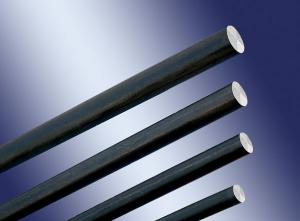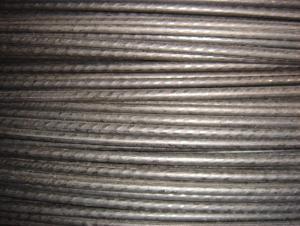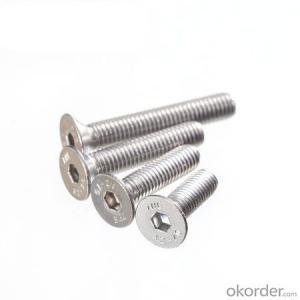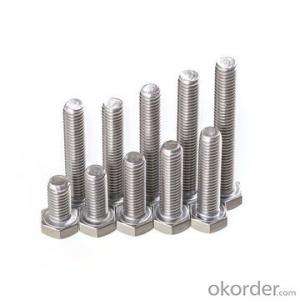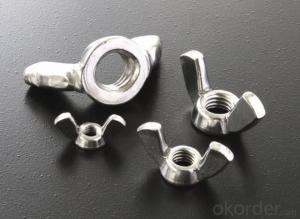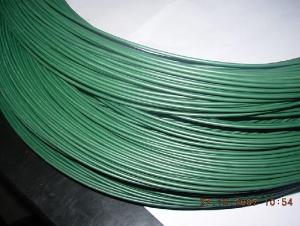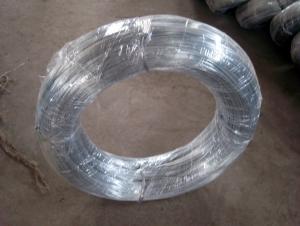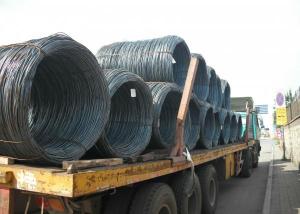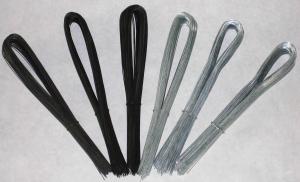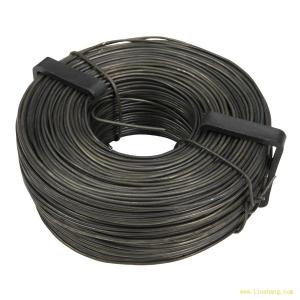High Quality Galvanized Steel Wire
- Loading Port:
- China Main Port
- Payment Terms:
- TT OR LC
- Min Order Qty:
- -
- Supply Capability:
- -
OKorder Service Pledge
Quality Product, Order Online Tracking, Timely Delivery
OKorder Financial Service
Credit Rating, Credit Services, Credit Purchasing
You Might Also Like
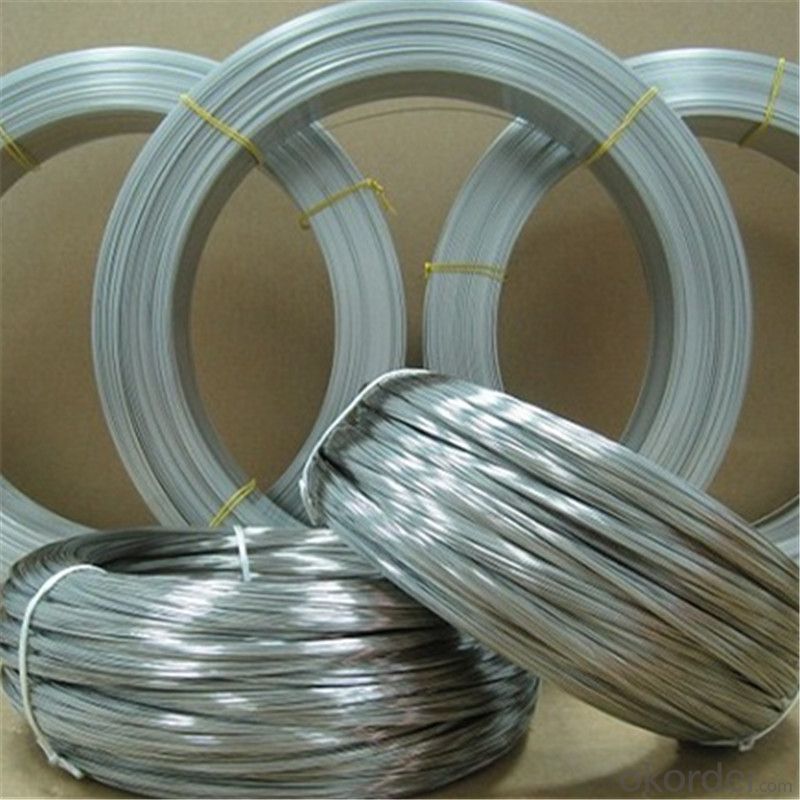
Quick Details
| Steel Grade: | Standard: | Wire Gauge: | |||
| Place of Origin: | Type: | Application: | |||
| Alloy Or Not: | Non-alloy |
Specifications
steel wire rope
galvanized steel wire
steel rope
wire rope
tensile strength:1470,1670,1870,1970Mpa
steel wire rope, galvanized steel wire, steel rope
Construction :1x7,1x19,1x37,6x7, 6 x 12, 6 x 15 and so on
Core: FC, IWS, IWR, NF and SF
Tensile Strength:1470,1670,1770,1870MPA
Packing : wooden reel , coils, plastic spool, bag and so on
- Q:why is neutral wire.explain plz
- The neutral is held at ground, to give a path for the current to return. The ground is for safety.
- Q:Hello! I'm going to re-wire my speakers and eventually get an amp to power them. For normal quot;door speakerswhat wire size would you recomend to run to them from an amp? Also, is 3ft far enough away to run my speaker wires from the amp power wire? Thanks in advance!
- I would use 16 gauge. you can go a little bigger, or smaller. The biggest issue you will have ( vehicle depending ) is getting that wire thru your accordion boot and molex ( the rubber thingy that protects your wires, shaped like an S, and goes from the chassis to the door) <~ that's not talking down to you, but if other people read this, they will know exactly what it means also :D Unless your running a ton of power to your doors, you really don't need thick wires. As to the other part, It's not the speaker wire you need to keep away from your power wire, it's your RCA cables.. The rule is power wire goes down the battery side of the vehicle, and the rca's and remote turn on, go down the opposite side, if possible. That way you don't get alternator whine( when you accelerate, a high pitched whine will play thru your system, and make you Bat-S#it crazy :) Good Luck!
- Q:95 Grand prix factory radio is neing hooked up to an amp. Whats a diffenrent alternative besides hooking the amp remote wire to the car radio remote wire.
- You can connect the remote wire to the radio accessory power wire. This should be yellow in a 95 Grand Prix. Your amplifier will turn on and off with the key switch.
- Q:I own a 1990 Toyota 4runner 6cyl, 3L. it had a few performance issues when i bought it. ( just didnt seem to have any power idling at around 200), so before spending money on expensive items, i figured spark plugs, wires, cap and rotor. So i just changed the spark plug wires today, and immediatly the truck was runnin much better idling at 800-1000 , about 5 minutes into driving, the problem started again, i parked the truck, it was idling at 200-300 again, opened the hood saw a bit of smoke coming from one of the wires, so im hoping and assuming it was just smoking because the wire was touching a hot surface, i can hear a bit of a clicking noise that i dont remember hearing before, almost like a spark. what could cause the sudden problem, is it possible the wires could be connected to the wrong spark plugs ( i replaced the old ones one by one, so i know i didnt connect it wrong) any tips would be great
- The wire burned on something hot and is arcing to ground. Replace it and use a wire loom to stand it away from the problem surface. That clicking sound is the arc.
- Q:When was the hot-wire anemometer invented? and who was it?
- Sir Charles Wheatstone in 1843 modern anemometer use ultrasound hot wire sensors are used as mass air flow but did not find original usage! Guru
- Q:What is a tubeless wire and how does it work?
- It is a wire without a tube. It works properly, it has a larger section than the usual wires, but is cheaper (Al is cheaper than Cu).
- Q:Three parallel wires are each carrying a 4A current. ; wire A) is 6 mm from wire B) which is 3mm from wire C); The current in wires B and C are out of the paper, while A is into the paper. What is the magnitude and direction of the magnetic field halfway between wires A and B?I have tried using Biot-Savart Law but keep getting it wrong can someone please help? I also have an equation for two parallel wires but how do I relate it to two?
- You can use the Biot-Savart Law, but it is confusing and kind of a waste of your time and space. For straight wires, someone ALREADY worked out the Biot-Savart Law. See the following link for the result: hyperphysics.phy-astr.gsu.edu/Hba... The formula of interest for us is B = mu0*I/(2*Pi*r) where mu0 is magnetic permeability of free space, I is current, and r is distance from the wire carrying the current. B is the magnetic field due to that PARTICULAR wire. To deal with three wires, use a superposition principle and stack magnetic fields on top of each other. Do be aware of direction: remember the right hand rule. RH rule for magnetic fields in vicinity of wires: point thumb in direction of current, curl fingers to show the magnetic field circulation direction. Use this sign convention: + B is up along page, -B is down along page For Wire A: point of interest is r = d_ab/2 or 0.003 m to the right of wire A Point thumb in to the paper and the finger curl indicates that B_A is downward B_A = -mu0*I_A/(pi*d_ab) For Wire B: point of interest is r = d_ab/2 or 0.003 m to the left of wire B Point thumb out of the paper and the finger curl indicates that B_B is downward B_B = -mu0*I_B/(pi*d_ab) For wire C: point of interest is r = d_ab/2 + d_bc or 0.006 m to the left of wire C Point thumb out of the paper and the finger curl indicates that B_C is downward B_C = -mu0*I_C/(2*pi*(d_ab/2 + d_bc)) Add up: Bnet = B_A + B_B + B_C Bnet = -mu0*I_A/(pi*d_ab) - mu0*I_B/(pi*d_ab) - mu0*I_C/(2*pi*(d_ab/2 + d_bc)) Simplify: Bnet = -mu0/pi*(I_A/d_ab + I_B/d_ab + I_C/(d_ab + 2*d_bc)) data: mu0:=4*Pi*10^(-7) Tesla-m/A; I_A:=4 A; I_B:=4 A; I_C:=4 A; d_ab:=0.006 m;d_bc:=0.003 m; Result: Bnet = -6.667 milliTeslas negative sign indicates downward direction.
- Q:The wires I have are: 1 red starter cable, 1 tan wire, 1 ground wire to the engine block, 1 red wire to the battery, and 1 red wire that splits into the fuse and into the junction strip. Really need to know which wires go where on the solenoid.
- Jtex has the right answer if you bought the right solenoid. Unfortunately- the Ford automotive solenoid is an exact replica, but wired different. So less you got the part from Mercury -your going to burn wires as the Ford puts power to one of the small terminals and the Mercury wants a ground to the same terminal as it's ground is regulated by the neutral no start switch.
- Q:Two current carrying wires are perpendicular to each other.Wire 1 is placed on top of wire 2.Wire 1 current direction is pointing North, wire 2 current direction is pointing east. Is there a force on either of the two wires?Does one wire spin due to the produced force?Please explain to me how to do this questionThanks
- Take your right hand and point its thumb to the North representing conventional current flow (Plus to Minus) in the top wire. Visualize the curl of your right hand's fingers can now be replaced be visualizing a bike tire rotating from nuckles to fingernail. Now do the same with the wire having current going East. Contact the two bike tires together a some infinitesimal spot. If those tires are exactly perpendicular in the X and Y (Z doesn't seem to matter because it is the point where they touch), it would make sense to predict that on top a vector will point West and on the bottom a vector will point South. The net vector should be SW. So, if you marked the initial point of cross over on the wires and mechanically could keep them free to move but still perpendicular, the cross over point would move SW for as long as equal current flowed in the two wires.
- Q:I NEED TO CHECK IF A WIRE IS GOOD ON A FITNESS MACHINE. HOW DO I KNOW IF ITS GOOD? WHAT SHOULD THE OHMS BE?
- This is true for most wires of practical sizes in devices like fitness bikes or treadmills. If you have a multimeter, you will find there is a setting for reading resistance, which is marked in Ohms. If you set the meter for that setting, you will notice that when you touch the red and black probes together, the meter will read ZERO ohms or close to it. There is a little knob somewhere to set it to zero. Then you can read a wire by touching the probes to the opposite ends of the wire. If the wire is sound, the reading will again be zero (equivalent to touching the probes together). If you don't get zero, the wire may be damaged or corroded. Watch for corrosion, which will give you a high-resistance reading. If the wire is one conductor in a cable with numerous wires in it, you will have to look for the opposite ends of the same conductor. They will probably be color coded, which makes it easier. Good luck.
1. Manufacturer Overview |
|
|---|---|
| Location | |
| Year Established | |
| Annual Output Value | |
| Main Markets | |
| Company Certifications | |
2. Manufacturer Certificates |
|
|---|---|
| a) Certification Name | |
| Range | |
| Reference | |
| Validity Period | |
3. Manufacturer Capability |
|
|---|---|
| a)Trade Capacity | |
| Nearest Port | |
| Export Percentage | |
| No.of Employees in Trade Department | |
| Language Spoken: | |
| b)Factory Information | |
| Factory Size: | |
| No. of Production Lines | |
| Contract Manufacturing | |
| Product Price Range | |
Send your message to us
High Quality Galvanized Steel Wire
- Loading Port:
- China Main Port
- Payment Terms:
- TT OR LC
- Min Order Qty:
- -
- Supply Capability:
- -
OKorder Service Pledge
Quality Product, Order Online Tracking, Timely Delivery
OKorder Financial Service
Credit Rating, Credit Services, Credit Purchasing
Similar products
New products
Hot products
